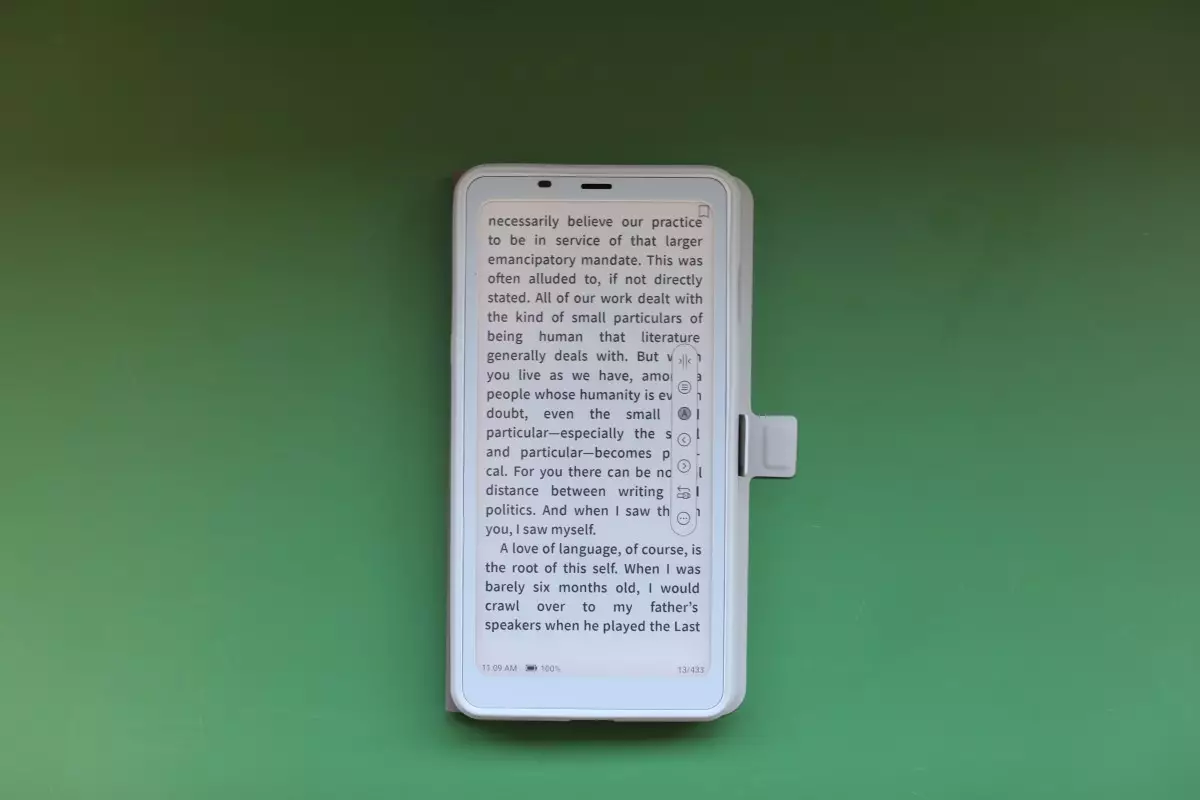The Palma, developed by Boox, stands as an intriguing addition to the e-reader market. Designed as a compact device, it aims to bridge the gap between modern technology and user mindfulness—a concept that resonates deeply with many in our digitally saturated environment. In today’s world, where distractions reign as the norm, the Palma is presented as a “distraction-free device” that promises to help users regain focus. However, the journey from intention to execution reveals complexities that merit a deeper exploration of this gadget’s identity and purpose.
With the pervasiveness of smartphones and their myriad features, the question of what constitutes a “distraction” versus an “essential” function becomes increasingly complicated. The Palma’s design philosophy aligns with companies like Light Phone, which champion minimalist devices intended to liberate users from the constant barrage of notifications and social media. However, delineating what distractions can be stripped away without encroaching on practical functionality presents a challenge for both developers and users alike.
Light Phone’s trajectory illustrates this struggle well. Initially marketed with a limited feature set, it gradually expanded its offerings based on user demand for additional functionalities. The implications of this evolution highlight the balancing act between reducing distractions and providing the tools needed for effective daily life. Can the Palma really be positioned as a more mindful alternative, or will its broader range of features draw it back into the complexity it aims to evade?
Diving into the features of the Palma, it becomes evident that it operates on a more complex level than a standard e-reader. Despite its ePaper display, known for its benefits in reading comfort and extended battery life, the Palma also incorporates an outdated version of Android, a camera, microphone, speakers, and Bluetooth connectivity. This diverse feature set implicitly suggests that the device has aspirations beyond just reading.
The Palma’s design can feel enigmatic; it possesses the fundamentals of both a PDA and an e-reader, yet it does not fully commit to either role. Equipped with an octa-core processor and a fingerprint reader—features not typically found in conventional e-readers—the Palma seems determined to carve out a unique niche. Yet, the absence of certain capabilities such as GPS and cellular calling raises questions about its practical utility. Users soon find themselves turning to alternative solutions, such as utilizing WhatsApp for voice communication, emphasizing the lengths to which they must go to fill gaps in the Palma’s functionality.
Interestingly, the limitations of the Palma have spurred creativity among its users. Online forums and discussions flourish, showcasing various hacks and workarounds to enhance the device’s capabilities. For example, the presence of a microSD slot for expandable memory offers a glimmer of hope for those looking to harness more storage, despite the absence of a SIM slot. The community’s enthusiasm for exploring and pushing the Palma’s boundaries highlights an encouraging aspect of modern technological engagement: users are inspired to innovate in response to limitations.
While this user-generated ingenuity is commendable, it raises further questions. Should a device require such extensive modification to attain its full potential? The need for workarounds can be disheartening, particularly for users who sought a straightforward solution to assist in their reading or focus efforts.
During my time using the Palma 2, I found it most effective as a device primarily for reading. The ePaper technology does indeed reduce eye strain, and the newer processor addresses latency issues observed in initial versions. Nevertheless, the inherent constraints of ePaper—such as refresh limitations—remind users that while the Palma may present itself as a multi-functional device, it is not exempt from the challenges that accompany its technology choices.
The $280 price tag presents another key consideration. For those whose primary use of the Palma will simply be reading, investing in a traditional e-reader like a Kindle might yield a higher return on investment. A more concise and simplified version of the Palma, stripped of superfluous features and offered at a more competitive price, could resonate with a larger audience eager for convenience without unnecessary complexity.
Ultimately, the Palma encapsulates the tension between aspiration and utility in modern device design. While it strives to provide a unique alternative to the distractions of smartphones, the execution highlights the challenges inherent in striking that balance. For users who prioritize reading, it serves well. For those seeking an all-encompassing device, however, its limitations become apparent. The Palma, with its innovative spirit and ambitious features, is valuable — though one must weigh its capacity against the complexities it entails. It remains a journey of exploration for both the creators and users in a world that continually seeks freedom from distractions.

